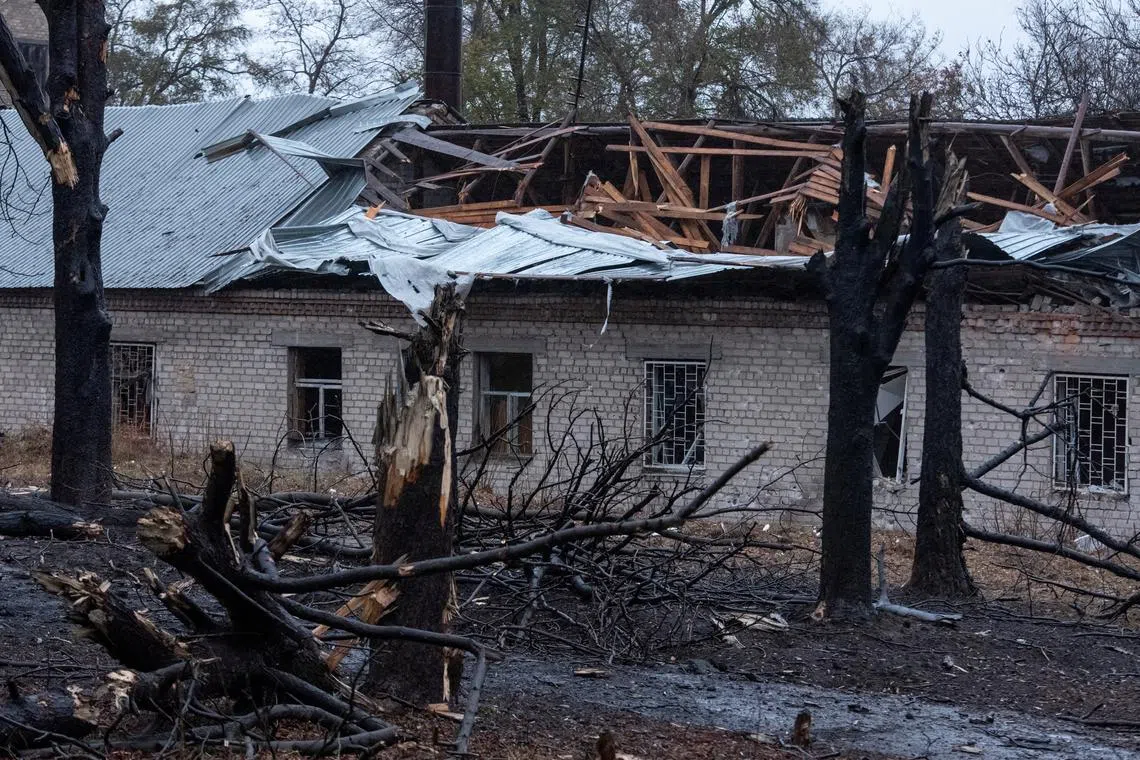What is the intercontinental ballistic missile Ukraine says Russia fired?
Sign up now: Get ST's newsletters delivered to your inbox

A view shows a site of a Russian missile strike in Dnipro, Ukraine on Nov 21.
PHOTO: REUTERS
Follow topic:
KYIV – A Russian intercontinental ballistic missile (ICBM) that Ukraine says was fired at the city of Dnipro on Nov 21 was an RS-26 Rubezh, Ukraine’s Ukrainska Pravda media outlet reported, citing anonymous sources.
According to defence sources, however, there are doubts as to whether the weapon used was the RS-26 Rubezh, and said an accurate assessment based on the available imagery would be difficult.
Missiles facts
- A ballistic missile is a rocket-propelled, self-guided weapon that falls towards its target by force of gravity.
- An ICBM refers to a ballistic missile with a range of more than 5,500km.
- US think-tank the Centre for Strategic and International Studies (CSIS) said although the R-26 is classified as an ICBM under the New Start nuclear arms reduction treaty between the United States and Russia, it can also fall into the category of an intermediate-range ballistic missile when used with heavier payloads at ranges below 5,500km.
Rapid flight
- Ballistic missiles including ICBMs can be fired in a depressed mode, meaning that they do not enter space and their trajectory stays within the atmosphere. That would use up more fuel and reduces their range.
- ICBMs fly at speeds of several kilometres per second. Coming from Russia, an ICBM would take around 40 minutes to reach a target in the United States coming from Russia, according to a military source. The more than 700 km journey to Dnipro from the Russian region of Astrakhan, from where Ukraine’s air force said the weapon was fired on Thursday, would take less than 10 minutes.
First successful test
- ICBMs are designed to carry nuclear warheads, although technically they can carry any payload of equal or lesser mass, with modifications. There was no suggestion that a nuclear weapon was fired on Thursday.
- According to the US-based Arms Control Association, the RS-26 has a range of up to 5,800 km.
- The CSIS said the RS-26 was first successfully tested in 2012 and is estimated to be 12m long and weigh 36 tonnes and can carry an 800kg nuclear warhead. It never formally entered service, according to experts. REUTERS

